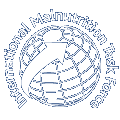
On this page you will find job aids created by different organisations to support professionals involved in the management of acute malnutrition. These job aids have been developed by or reviewed by partners of the IMTF.
Email us to tell us what you think of these job aids, or if you have other job aids that you would like to share.
Inpatient job aids
’10 steps’ wall chart for inpatient management (IMTF)
This wall chart summarises the WHO guidelines on the management of severe acute malnutrition. The wall chart explains each of the ’10 steps’ of routine management and is designed to display in wards where severely acutely malnourished children receive daily inpatient care. It is recommended that the wall chart is printed A2 and laminated.
Emergency care wall chart (IMTF)
This wall chart summarises the WHO guidelines for initial management of children with severe acute malnutrition. The wall chart explains how to give emergency treatment for shock, severe dehydration, very severe anaemia, hypoglycaemia and hypothermia and how to give emergency eye care. The wall chart is designed to display in casualty departments and places where emergency care is given to severely acutely malnourished children. It is recommended that the wall chart is printed A2 and laminated.
Inpatient management toolkit (IMTF and Muhimbili National Hospital, Tanzania)
This toolkit is designed to support the inpatient management of severely acutely malnourished children. The toolkit includes ward evaluation forms, guidance on feeding procedures, feed charts (adapted from WHO charts), wall charts and staff induction forms. The toolkit is designed to support the IMTF nurse and doctor training materials found on the training page.
Emergency Nutrition job aids
Emergency Nutrition Toolkit
A Toolkit for Addressing Nutrition in Emergency Situations has been developed by Global Nutrition Cluster. This toolkit covers areas such as Infant and Young Child Feeding in Emergencies, Management of Moderate Acute Malnutrition, Treatment of diarrhoea with ORT/Zinc, Nutrition, HIV and AIDS, and other important areas. <.p>
Use the link below to access this toolkit.
Module 2 Infant Feeding in Emergencies
Module 2 comprises four parts – a core manual, additional material (including sections on artificial feeding and management of acute malnutrition in infants under six months), annexes and slides content. It aims to provide those directly involved with infants and carers with the basic knowledge and skills to support safe and appropriate infant and young child feeding.
Follow the link for full details.
Operational Guidance on Infant and Young Child Feeding in Emergencies, v2.1
This document produced by ENN and endorced by many agencies, organisations and donors provides concise practical but mainly non technical guidance on how to ensure appropriate infant and young child feeding in emergencies.
Full details can be downloaded
here
Community Based Management of Acute Malnutrition job aids
CMAM Costing Tool
FANTA-2 has published Community-Based Management of Acute Malnutrition (CMAM) Costing Tool.
The CMAM Costing Tool is a Microsoft Excel-based application that estimates the costs of implementing CMAM at the national, sub-national, and district levels. The Costing Tool calculates the inputs and financial resources required to establish, maintain, or expand CMAM services. This information helps managers determine whether their plans for CMAM are financially feasible, identify the resources needed, and formulate an effective implementation plan. The Costing Tool can also support the promotion and management of CMAM services. Government or NGO stakeholders in a country or region where acute malnutrition is prevalent can use the CMAM Costing Tool to plan for implementation of specific CMAM components and forecast the resources required.
For further details and to access the tool go FANTA-2 website
the WHO Vitamin and Mineral Nutrition Information System
The WHO Vitamin and Mineral Nutrition Information System is now available in French and Spanish. The Arabic, Chinese and Russian sites will be online shortly. This has been part of our efforts in upgrading and expanding this vitamin and mineral nutrition surveillance system. In addition to the Micronutrients Database the site now contains other sections on indicators, monitoring and evaluation tools and resources, publications and laboratory capacity with a description of each of the ongoing efforts. There are new features coming in the next months when many more functionalities will become available.
Download using the links below
